
Two QUT researchers used a standard laptop and a piece of rock from a diamond mine waste pile to solve a long-standing geological puzzle about diamond formation in the Earth’s ancient continents.
Two researchers from Queensland University of Technology (QUT) have utilized a simple laptop computer and a piece of rock, obtained from a diamond mine’s “waste pile”, to unravel a long-standing geological mystery surrounding the formation of diamonds in the deep roots of the earth’s ancient continents.
The lead author, QUT Ph.D. student Carl Walsh, along with QUT Professor Balz Kamber and Emma Tomlinson from Trinity College, Ireland, recently published their findings in the prestigious journal Nature.
Mr. Walsh said the study, for his MSc research, involved computer modeling on a rock from the African continent recovered from the bottom of the lithosphere, the outer part of the Earth between about 30km and 250km below the surface. Mr. Walsh said the dominant part of a continent was the part that you never see.
“If you think of an iceberg – the visible part – if you just had an iceberg floating on the ocean surface it would tip over like a boat. This is like the keel of an iceberg,” Mr. Walsh said.
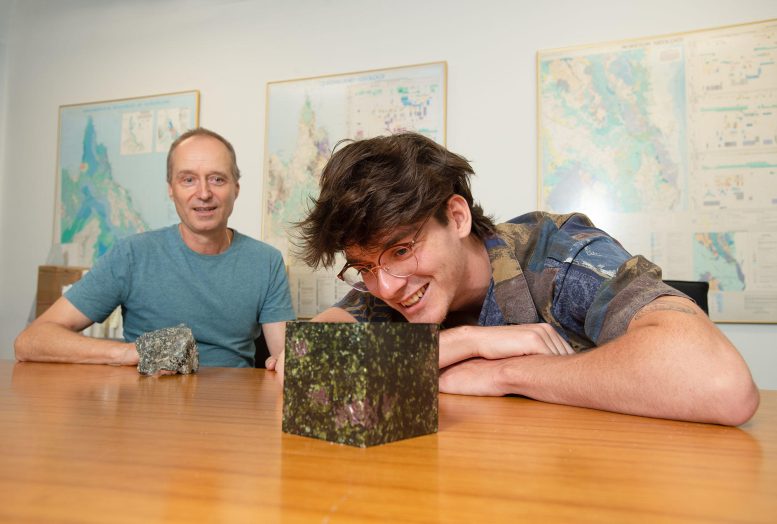
Carl Walsh, right, QUT Ph.D. researcher and lead author of a paper published in Nature with QUT Professor Balz Kamber. Carl is looking at a cube of garnet peridotite. The color of this garnet shows the presence of chromium, which is an indicator of the presence of diamond. Credit: Queensland University of Technology
“We basically had a known starting composition of a rock, which is representative of the earth’s mantle at an early time in the history of the earth before all the continents were formed,” Mr. Walsh said. “We took that starting composition and modeled what would happen to it if it was progressively melted, and what would be left over. And that material is what forms the bulk of the roots of ancient continents that are still around today.”
Professor Kamber, from QUT’s Faculty of Science, School of Earth and Atmospheric Sciences, said the aim of this research was to use a computer model to see how these deep roots might have formed.
“The model essentially predicts which minerals and melts will be present as you change the temperature of the mantle. So, it’s a predictive tool you can compare with the composition of actual minerals and rocks,” Prof Kamber said.
The piece of rock used for the advanced computer modeling was mined sometime between 1871 and 1914 and ended up in the “waste pile” of the legendary Kimberley diamond mine, best known as ‘The Big Hole’ – a combination open-pit and underground mine – in Kimberley, Northern Cape in South Africa.
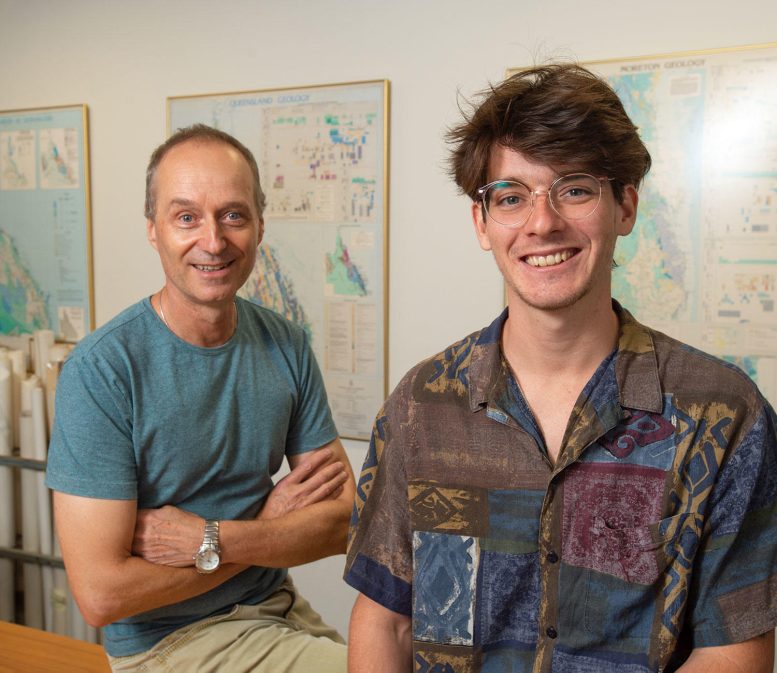
Professor Balz Kamber and QUT Ph.D. student Carl Walsh. Credit: Queensland University of Technology
The piece of rock they have modeled, garnet harzburgite, was brought to the surface in a kimberlite pipe. The rock was retrieved by Professor Kamber – who specializes in petrology, a branch of geology that studies rocks and the conditions under which they form.
He carefully sledgehammered the rock down to a size that he could successfully ship home.
“It contains a jumble of minerals that were entrained on the way up as they ripped through the base of the whole continent in a supersonic volcanic eruption – the likes of which we have never seen,” Professor Kamber said. “The minerals in this rock sample are so badly hurt, they are screaming still today, they were absolutely smashed.”
“It is so exciting to see this preserved, it is extremely old – 3.3 billion years old. Probably the oldest rock most people will ever hold in their hands,” Professor Kamber said.
Mr. Walsh said the study solved the conundrum of diamonds and the temperatures in which they formed, given a diamond will turn into graphite if heated up too much.
“But yet, when we look at the rocks that contain diamonds, they must have been heated to massive temperatures,” Mr. Walsh said. “So why is it that it is exactly those rocks that experienced the highest temperatures that ended up having diamonds?”
Their research challenges the existing two-step shallow “melting and stacking” explanation.
“Previously, it was believed that most of the ancient deep roots of continents would have been host to diamonds and that these diamonds were destroyed over time, because the base of the continent is continually invaded and eroded by volatile-rich melts and fluids,” Mr. Walsh said. “Our work suggests that actually, this might not be the case, that diamonds are rare today – and were in fact always rare. And that’s because we can for the first time know what is missing from the cradle of the diamond and we can go hunt for it at the surface.”
Professor Kamber said on the present-day earth the heat and temperature distribution in the mantle is not uniform.
“We have areas of relatively uniform mantle temperature and areas where the mantle is a lot hotter. These are known as mantle plumes. And we have expressions of these in Hawaii and Iceland,” Professor Kamber said. “What we’re studying is the effect of ancient plumes – when much hotter plumes than we have now would have hit the base of a growing continent.”
Since conducting the research, Mr. Walsh has traveled to Canberra to recreate similar rocks in the lab at the Research School of Earth Sciences at the Australian National University.
Reference: “Deep, ultra-hot-melting residues as cradles of mantle diamond” by Carl Walsh, Balz S. Kamber and Emma L. Tomlinson, 15 March 2023, Nature.
DOI: 10.1038/s41586-022-05665-2

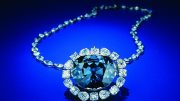


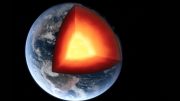


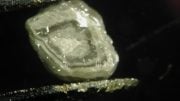
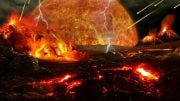
A good article. However, it could have been more complete
I love this article it’s well informative but I have some questions to ask of you guys what happens if I discovered another diamond mine bigger than the one in Africa something that would change the United States forever. I’m talking so big that it would put America the number one place for diamonds please let me back and I will explain more
“He carefully sledgehammered the rock down to size” is not a sentence I expected to read today.